The charming city of Würzburg, Germany in Bavaria sits along the river Main, adorned by castles, hilltop fortresses, and incredible medieval churches. This must-see travel destination in the Franconian Wine region leaves more than a few secrets to uncover for visitors to this picturesque historic German city.

What is Würzburg, Germany best known for?
Set upon a stunning landscape of hillside vineyards, a Bavarian gem, Würzburg is best known for its tasty Franconian German wines and stunning architecture, including the spectacular UNESCO World Heritage Site — Residence Palace.
There is so much to see and do in Würzburg, and you will be sure to enjoy the old-world Franconian hospitality that abounds in the city’s numerous eateries, wine bars, wineries and markets.
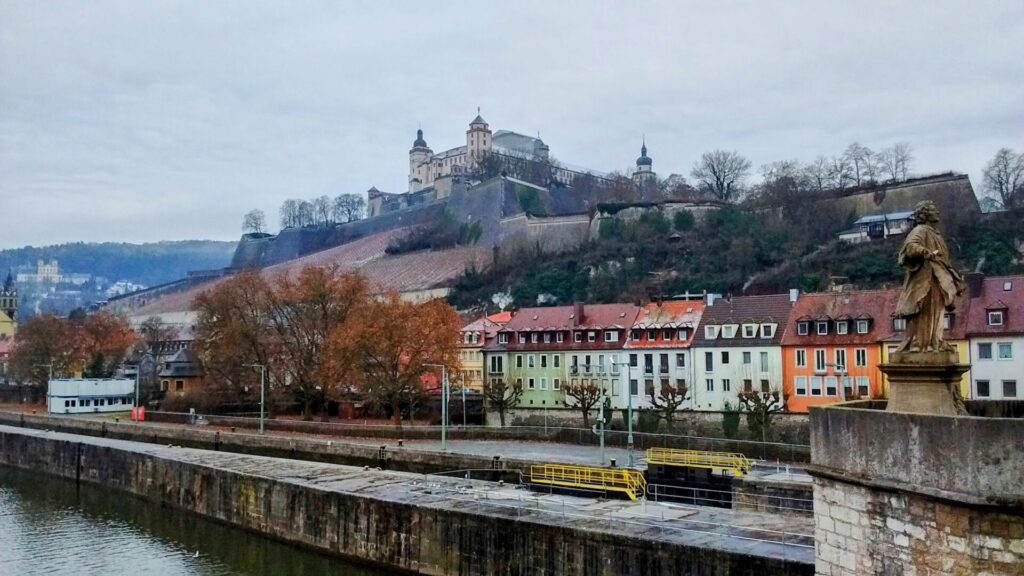
Picturesque Views
I can’t think of a more stunning viewpoint than standing on the 180-metre-long ‘Alte Mainbrücke’ or Old Main Bridge at dusk sipping a glass of Franconian wine (a local custom in Würzburg), peering across the vineyards to the hilltop Marienberg Fortress castle. The grapevine-covered hills are an incredible backdrop to this lovely German tourist destination.
Fascinating Fact: did you know that the X-ray was invented in 1895 in Würzburg? Hilhem Roentgen won the first Nobel Prize in physics for his discovery.
Würzburg’s Must-See Bavarian Landmarks
Picturesque Würzburg Is home to some stunning landmarks and natural scenery. Set in the valley of the river Main, the city straddles the riverbanks providing breathtaking locations complete with ancient churches, lush vineyards and wineries as well as the imposing Marienberg Fortress standing over 100 meters high above the city.
In Würzburg’s city centre, don’t miss the city’s incredible cathedrals, the charming Old Bridge, and street markets — they are all must-sees. A trip is also not complete without a visit to the stunning Residence Palace, an architectural marvel reminiscent of the Palace of Versailles.
#1. Würzburg’s Old Main Bridge — Alte Mainbrücke
The ‘Alte Mainbrücke’ pedestrian-only bridge is the social heart of the city. Visitors and locals alike gather leisurely each evening to linger and sip a glass of Würzburg’s best local wine or an Aperol Spritz while soaking in the beauty of the Marienberg Fortress and surrounding Vineyards. The Gasthaus Alte Mainmühle has a little window labelled ‘Brücken Schoppen’ at the start of the bridge that sells local wines to drink on the bridge.
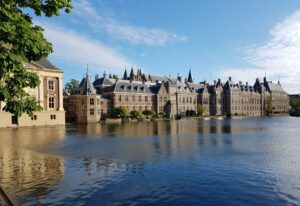
Constructed between 1473 to 1543 the bridge connects the old fisherman’s village and vineyards to the city centre across the river Main.
Pause for pictures under the 12 statues of saints with their golden crowns along the bridge, including St. Kilian, the patron St. of Würzburg.
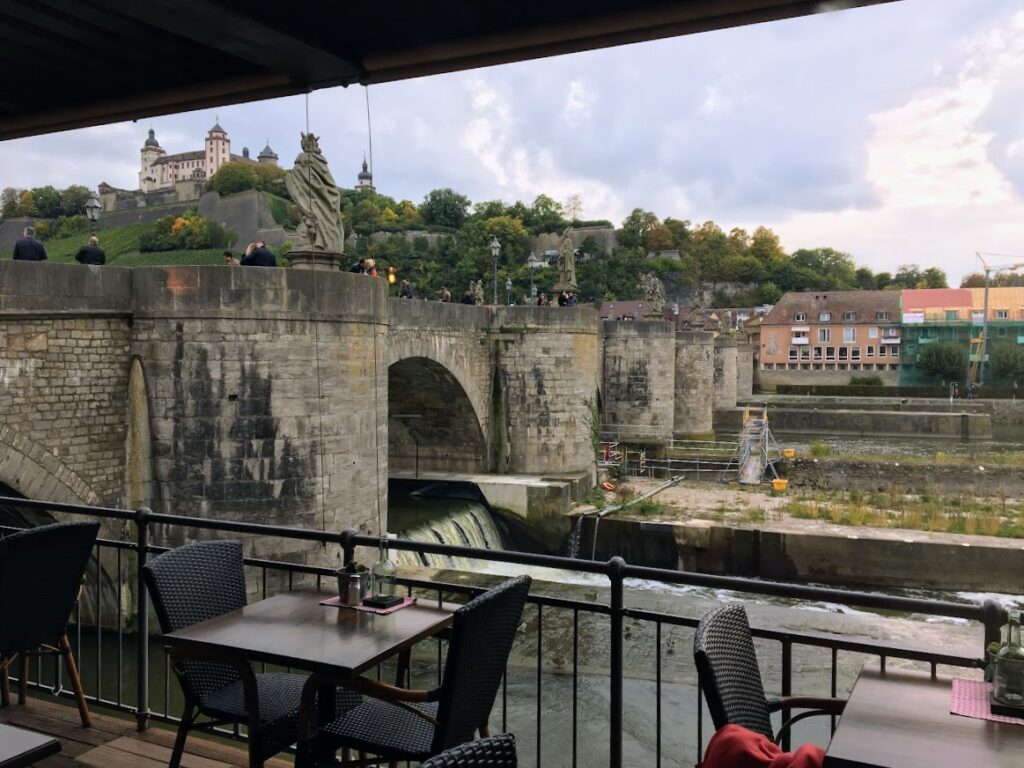
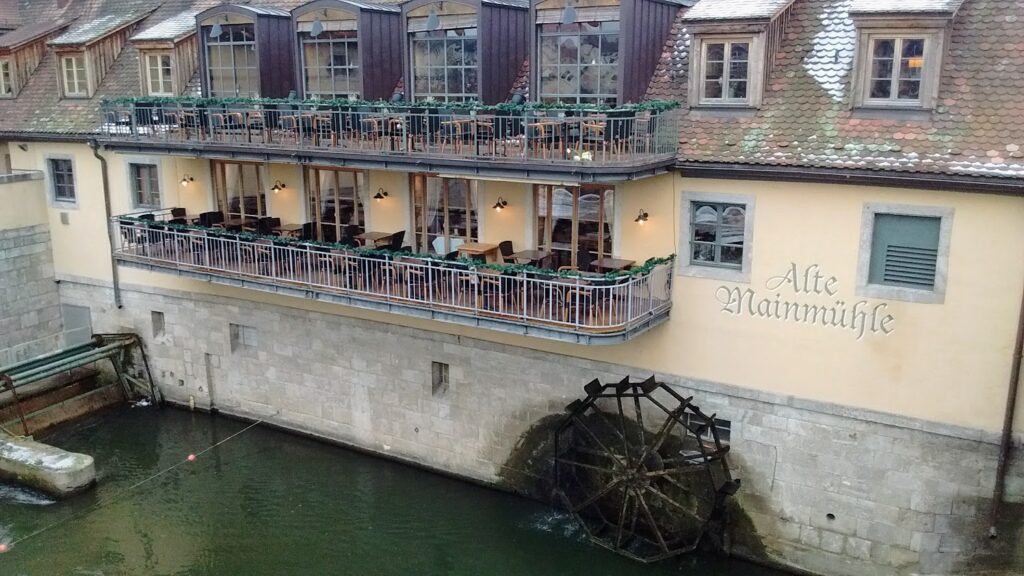
#2. Marienberg Fortress Medieval Castle High Above Würzburg
The Bavarian Castle ‘Festung Marienberg’, or Marienberg Fortress stands prominently over the city and surrounding valley. Parts of the castle date back to the 8th century. Once home to Würzburg’s ruling Prince-Bishops, and part of the Holy Roman Empire, the castle is complete with fortifications, castle walls, moats, gardens and medieval dungeons.
Currently, the Marienberg Fortress houses two museums and is a spectacular viewpoint. It’s worth the visit just for the panoramic views from the top of Marienberg Hill.
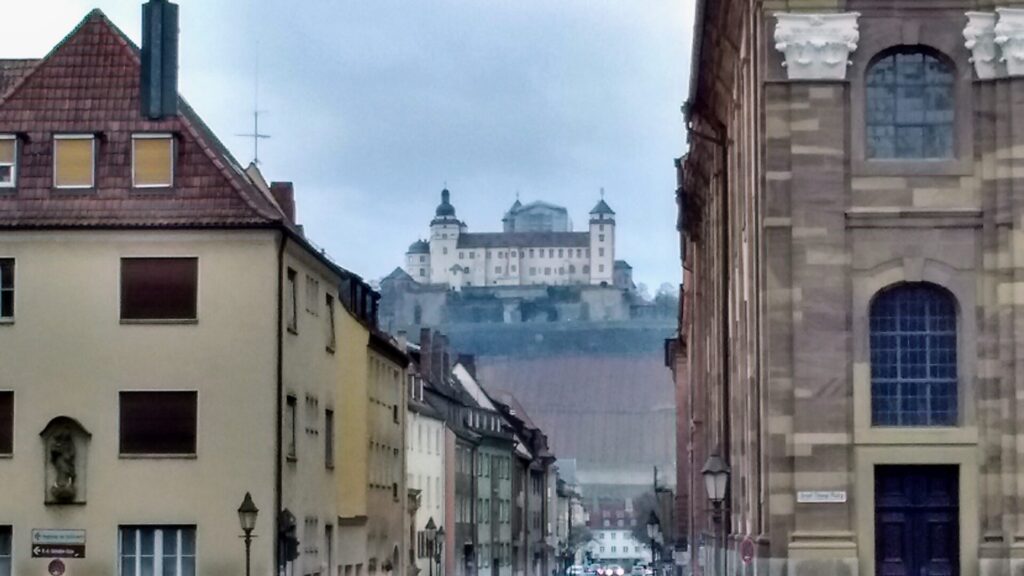
What to see at Marienberg Fortress
Tour the castle grounds and see the fortifications dating back to the 1300s. The building’s former Armoury, the Zeughaus, houses the Museum für Franken, a collection of Baroque and middle ages art and sculpture, including those of Würzburg’s famous 15th-century sculptor Tilman Riemenschneider. Fürstenbaumuseum explores the cultural and historical aspects of the region.
Make sure to explore the Marienberg Fortress’ beautiful Prince’s Court Gardens, with its enchanting landscape of terraces, fountains, and sculptures that make a perfect locale for a leisurely afternoon stroll or picnic.
How to get to Marienberg Fortress
You can reach the Marienberg Fortress by car or footpath, accessed from the far side of the Alte Mainbrücke/Old Main Bridge. The picturesque footpath takes you up through the vinyards to the top of Marienberg hill where you reach the castle’s main gates.
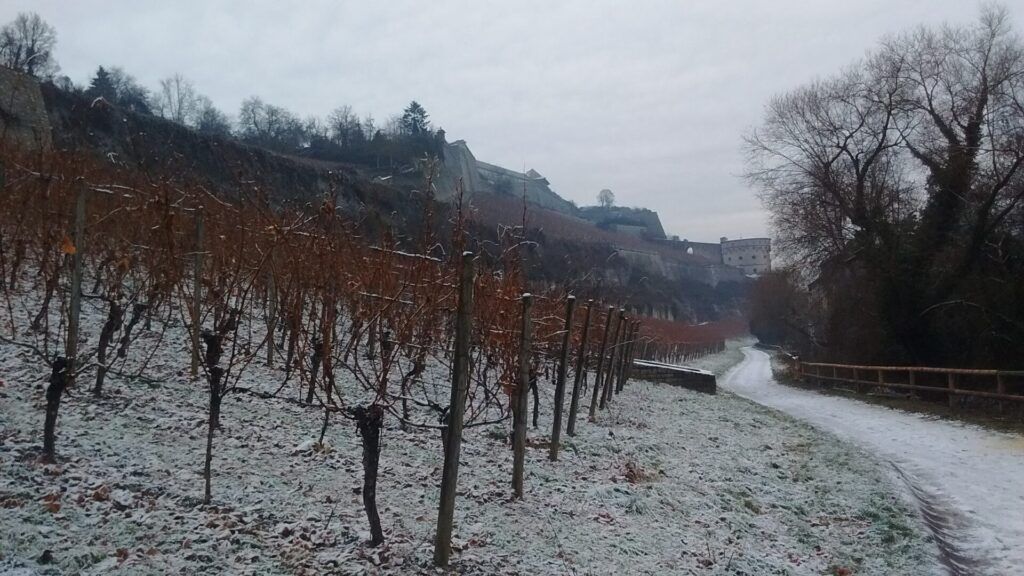
#3. Würzburg Residence Palace the ‘Castle above all Castles’
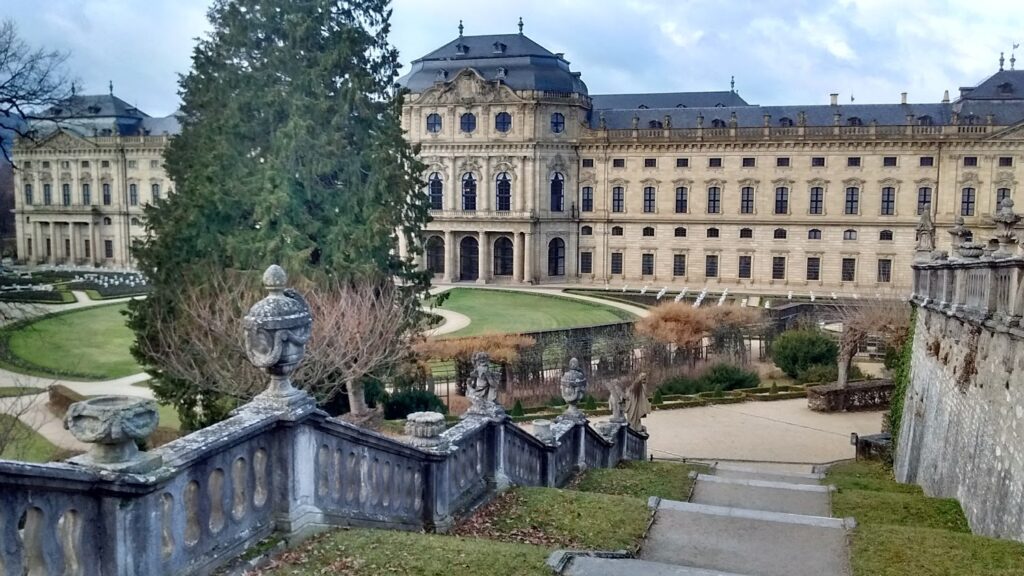
Würzburg’s Palace: the Residenz and Hofgarten
Würzburg’s Residence Palace is an incredible baroque-era, ‘Castle of Castles’ that feels very much like a German Palace of Versailles.
Dating to 1719 and completed in 1744, the UNESCO World Heritage Site Residence is considered a masterpiece of Baroque-Rococo Neoclassical architecture. See the exquisite details, Italian Frescos and over 200 elaborately decorated rooms with Imperial apartments on display in this incredible structure.
The Palace wine cellar — Staatliches Hofkeller — was founded by the Prince Bishops back in 1128, and relocated to the Palace’s basement in the 1700s. In use to this day, it is one of the oldest and largest wineries in Germany and produces over 850,000 bottles per year. Wines of Silvaner, Mueller-Thurgau, Bacchus, Pinot Blanc, and Pinot Gris to name a few are all stored in the cellars under the incredible Residence.
Residence Palace Location: Residenzplatz 2, 97070 Würzburg | Tours: Guided 50-minute tours in English are available daily from 11 a.m. and 3 p.m. Admission is € 9 per person. | official website
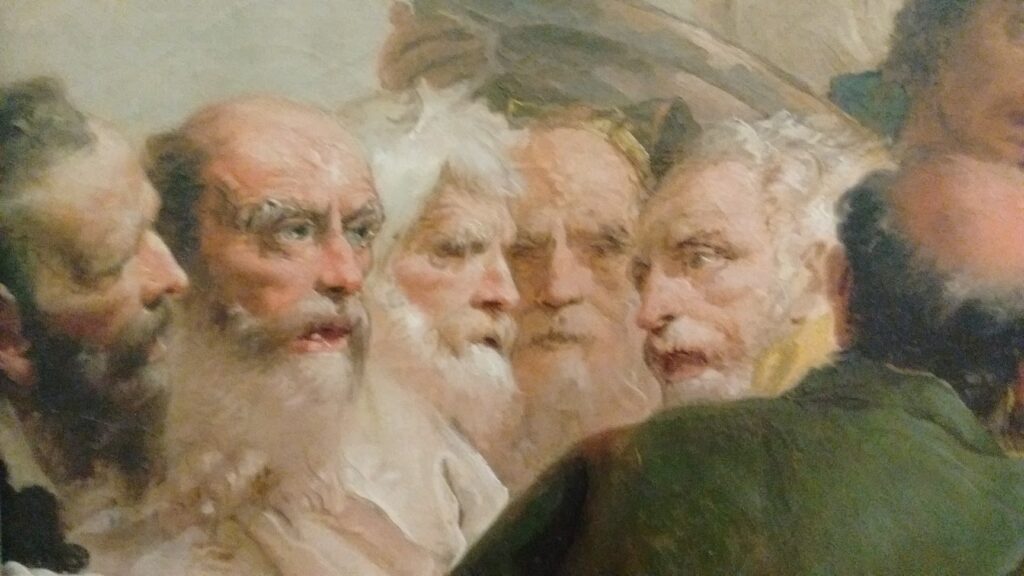
Residence Palace Castle’s Near Demise
Nearly destroyed by extensive bombing campaigns in 1945, significant features were saved including the magnificent self-supporting vaulted staircase, the building’s central White hall with monochromatic stucco ornamentation by Antonio Bossi and the brilliant ceiling frescos in the Imperial Hall by Venetian Giovanni B. Tiepolo. The Castle has been faithfully reconstructed and features a gallery of the painstaking restoration efforts.
Incredible Italian Frescos in Germany
Würzburg’s Residence Palace has the largest ceiling frescos ever painted at over 600 square metres. The fresco depicts the exotic worlds and creatures of the four known continents at the time.
Check out the Imperial Hall with splendid furnishings and frescos by Italian Giovanni B. Tiepolo. Seek out the Garden Hall with its elaborately painted ceiling by Johann Zick and one of my favourites, the luxurious Green Lacquered Room. Gaze in wonder at the amazing Mirror Hall. Take some time to stroll the elegant Court Gardens and then relax on one of the many benches and take in all of the beautiful surroundings.
#4. Find the Hidden Church – Residence’s Hofkirche Chapel
One of the most memorable things I toured in Würzburg was The Residence’s Hofkirche Chapel. Consecrated in 1743 the breathtaking church was built into an unassuming corner of the palace and is not at all noticeable from the exterior.
The church is rich with ceiling frescos, lavish stucco figures and two amazing alter paintings dating back to 1752 — “The Fall of the Angels” and “The Assumption” by Giovanni Battista Tiepolo.
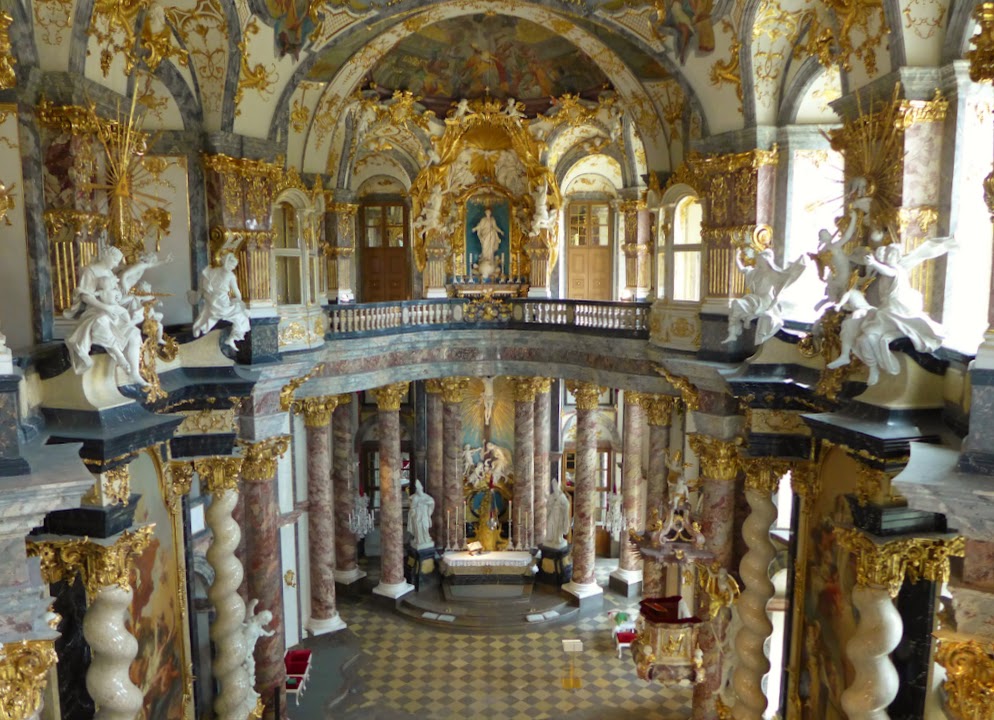
#5. Cathedral Dom St. Kilian & Maria Chappel
The towering Dom St. Kilian Cathedral is rich with history and contains the many tombs and epitaphs of the former rulers of the land — the Prince Bishops of Würzburg. The Cathedral dates back to an astonishing 1040 A.D.
An ancient bell dating to 1257 remains in service in the bellfry having survived the bombings of WW2 as it had been removed and protected during the war.
Facinating History: It is said that the bells that remained in the cathederal during WW2 were liquified in the firestorm created by the bombing and dripped down to the basememt!
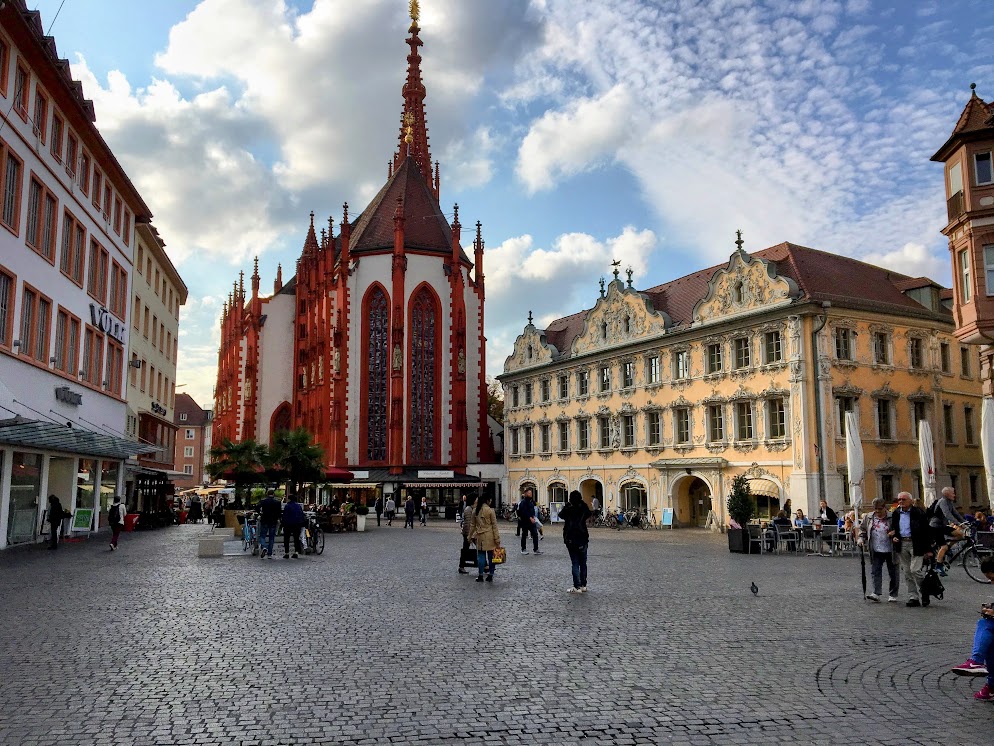
The brilliant red and white neo-Gothic style Chapel of St Mary / Maria Chappel was first constructed with its cornerstone laid in 1377. The Chapel is a favourite for visitors for its unique architecture and incredible sculptures and Grave monuments by Tilman Riemenschneider. The Church is located next to the Falkenhaus in the Market Square in Wurzburg.
#6. See Works by 15th Century Master Tilman Riemenschneider
Known as one of the greatest sculptors of the late Middle Ages, Tilman Riemenschneider settled in Würzburg in 1483 and acquired the status of Master Sculptor in 1485. A once prominent citizen of Wurzberg, he found himself entertaining commissions from churches and civic authorities and quickly became one of the most prolific sculptors in Germany. His works can be seen in a number of locations in Wurzberg.
The museum at Marienberg Fortress houses the most extensive collection of works by the famous woodcarver, and the Dom St. Kilian cathedral has impressive carved marble gravestones of Rudolf von Scherenberg ( 1495) and Lorenz von Bibra ( 1519) by Tilman Riemenschneider.
#7. Street Markets & Christmas Markets in Würzburg Marktplatz
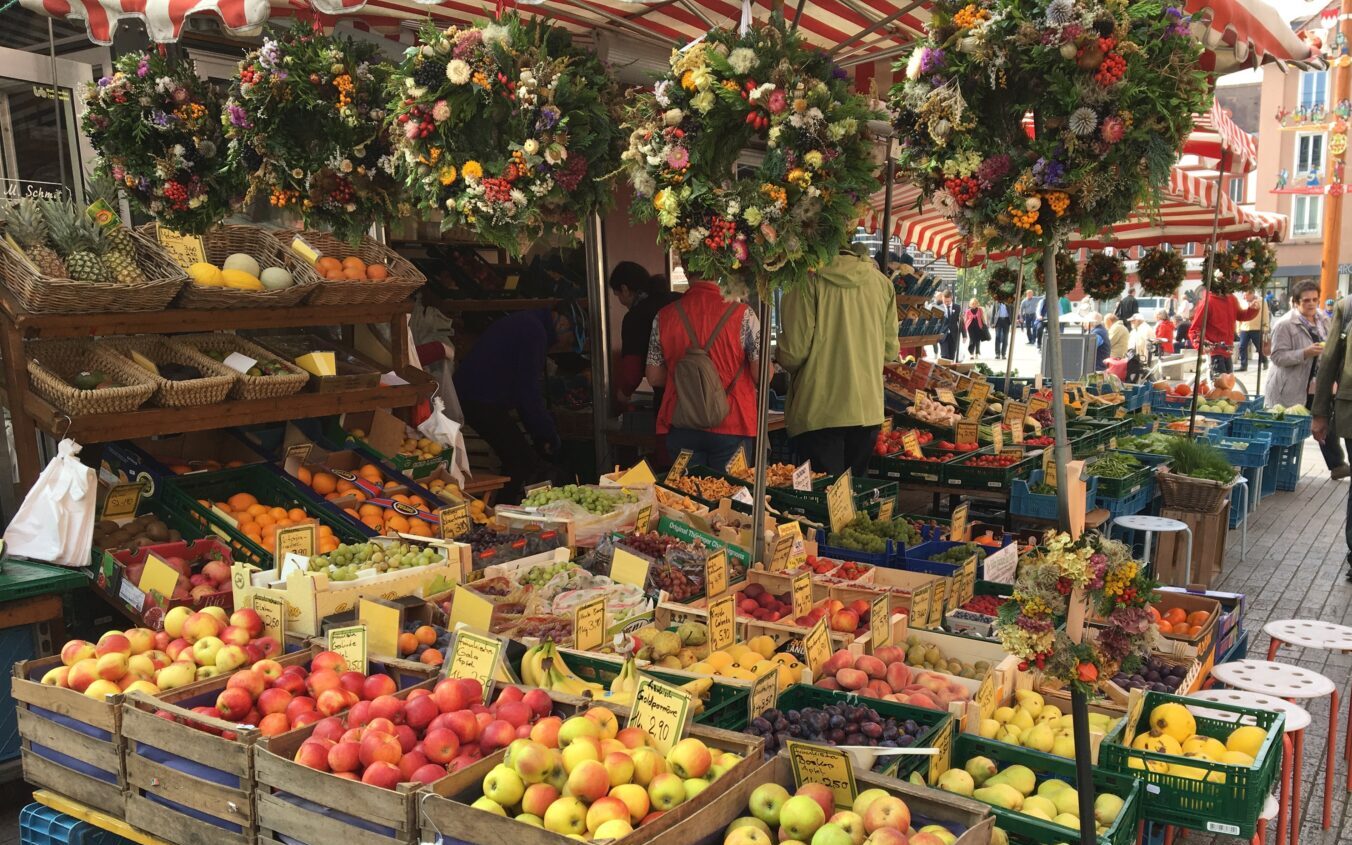
Surrounded by an abundance of beautiful historic architecture like that of the nearby 14th century St. Mary’s Church, the Market Square in Würzburg hosts a bustling weekly market as well as the home each December to its historic Christmas Market. Sample the local Bratwurst as you stroll through the Sunday Market with fresh vegetables, fruits and local delicacies.
At the festive annual Christmas Market that runs each December, you’ll find jewelry, candles, handcrafted holiday decorations, winter activities and an abundance of food specialties. Sample the scrumptious Franconian Christmas cookies and sip warm Glühwein — the traditional spiced wine with cinnamon, cloves and orange — as you stroll through the 140 wooden stalls in the market.
Christmas Market Hours: December 1 – 23, 10 am – 8:30 pm, Sunday 11 am–8:30 pm | more info: Website
#8. Neumünster Church and Crypts
Located in the Altstadt or Old Town, the ornate Neumünster Church is worth a look for its ceiling frescos, relics of St. Killian and Crypts.
A former monastery, the Church is known for its tomb of St Kilian, a 7th-century monk who was slain along with two of his followers on the spot where the church now stands. The three skulls of the monks are preserved in an ornate glass case and the relics are paraded through the town once a year on July 8th, St Kilian’s feast day, and displayed inside the cathedral.
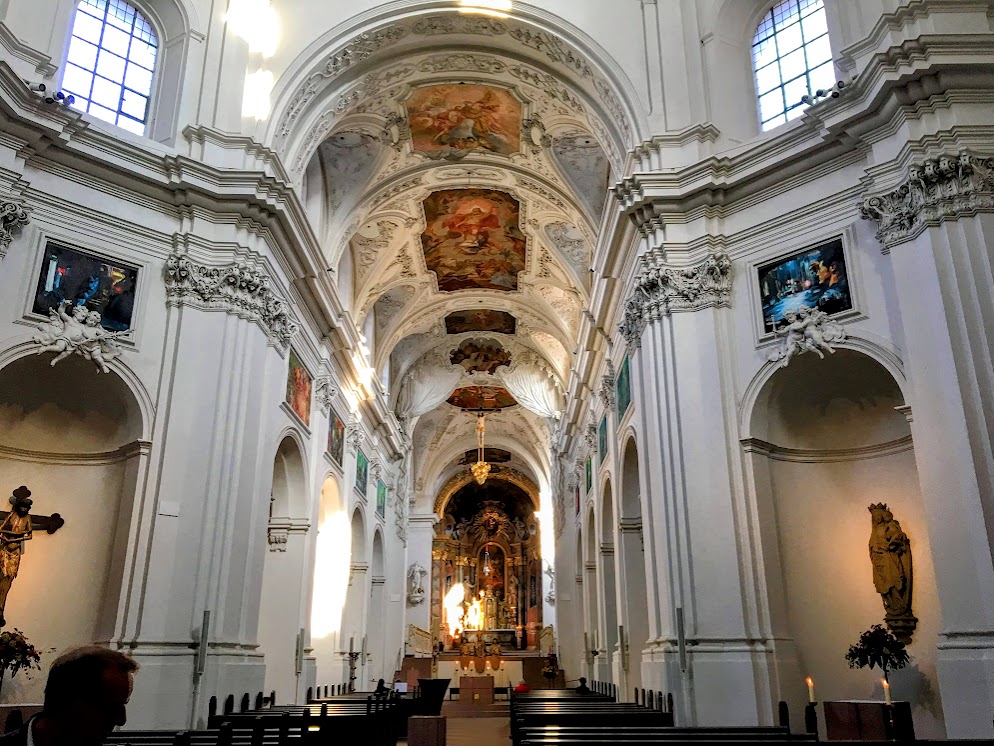
Walking tours of Würzburg
The city of Würzburg is a very walkable city. Tour by foot through the historic old town, up and down the Main River, and through the vine-covered slopes of the Marienberg Hill.
A free downloadable Walking Tour of Wurzberg and some of its most impressive sites can be found here: https://www.wvv.de/media-wvv/mobilitaet/dokumente/kulturlinie/flyer-kulturlinie-englisch_online.pdf
Getting to Würzburg by Rail
Getting to Würzburg by Rail is fast and simple as it is located along a major rail route. It is extremely easy and surprisingly fast to get across Germany on the high-speed railway as the Deutsche Bahn ‘ICE’ trains routinely reach speeds of 300kph. The Würzburg Train station Würzburg Hbf is close to the city centre and has some great hotels nearby.
From Frankfurt:
You can catch the Deutsche Bahn ‘ICE’ or Intercity-Express fast train direct to Würzburg- it will take about 1hr 07mins and costs about €20-€30 each way depending on the time you travel. Look for ‘ICE’ in the train’s descriptor when purchasing tickets on the DB website.
From Munich:
There are dozens of Deutsche Bahn ‘ICE’ trains every day between Munich and Wurzburg, the trip takes about 2hrs 30mins and costs about €30-€60 each way depending on the time you travel.
From: Amsterdam Schipol Airport:
You can connect from Amsterdam via Frankfurt or Brussels. Elsewhere in the Netherlands, you can connect through Utrecht and on to Frankfurt. The trip will take about 5 hours.
Conclusion
I’ve had the pleasure of travelling to this unique and wonderful German city a number of times and have always looked forward to returning. For such a small city there seems to be an endless amount of things to see and do in Würzburg. Ending your evening on the Old Main Bridge and chatting with friends and locals is a special highlight of any trip there.
As for Accommodation, there are plenty of high-quality hotels (over 100) and no shortage of excellent restaurants in the city.
Whether you are travelling to Würzburg via river cruise, by rail or by car, I am certain you will enjoy the city as much as I have.
FAQ
How do you pronounce Würzburg? The name is pronounced ‘Vurtz-bur-g’
What languages do they speak, is it easy to get by in English? The primary language is of course German, but I found it extremely easy to get by in English only. As a prime tourist area, all shops and restaurants had English-speaking staff.
When is the Christmas market in Würzburg? For 2023, the Christmas Market is open December 1 – 23, from 10 am – 8:30 pm, Sunday 11 am–8:30 pm
